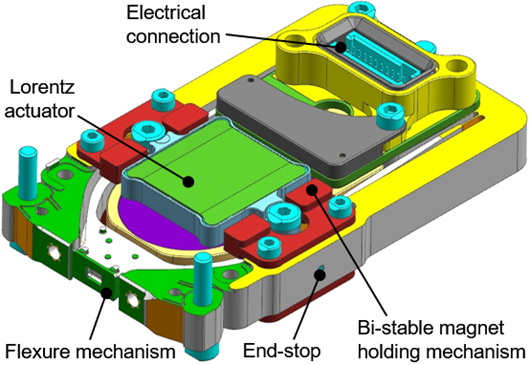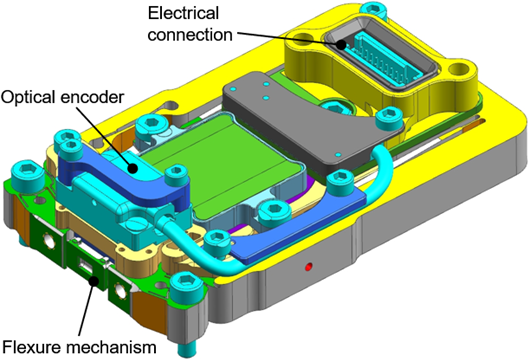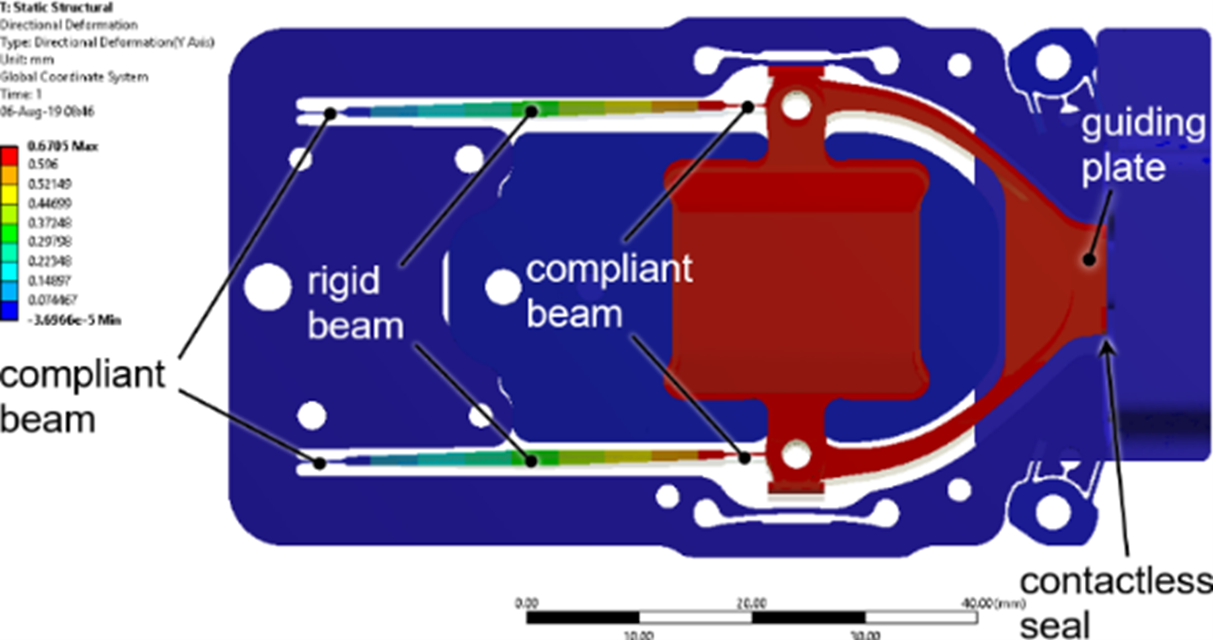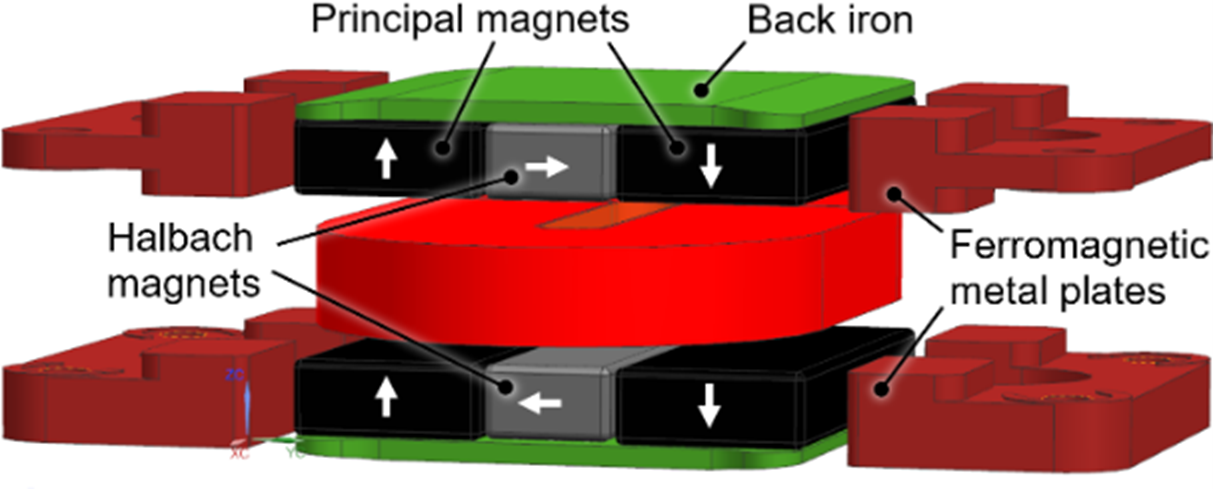Chapter 6 - Design for low friction and hysteresis
Fast contactless hydrogen valve for wafer stage application
A more economical microchip fabrication is not only defined by its architectural simplicity, driving cost of goods, but also on how fast it can be manufactured. Next to overlay, productivity is a key performance indicator in semiconductor lithography. A hydrogen valve was developed targeting both challenges. For the first application, the wafer production costs are lowered by increasing the wafer throughput. This is realized by reducing the time it takes to swap the wafers. For the second application, the chip performance is improved by improving the overlay, which is the relative positioning accuracy of subsequent layers. This is realized by temperature conditioning at the wafer level with hydrogen gas to reduce the drift introduced by heat loads from various sources.
Description
Since no commercial valve was available that could meet all requirements of the application, a new hydrogen valve was designed from scratch with a high degree of commonality. The flexure-based design is fast, accurate and in synchronization with the EUV light, but also lightweight, robust and reliable to withstand 10g accelerations and magnetic cross talk from the wafer stage. The first configuration that is designed for wafer conditioning (see Figure 1) is driven open loop. Heat dissipation is minimized to <30 mW via a bi-stable magnet holding mechanism and end-stops. The second configuration (see Figure 2) is designed for wafer throughput enhancement. Here, an optical encoder is used for closed loop control (minimized Abbe offset), and physical contact between moving parts is avoided for fast and accurate switching at 30 Hz. A 3/2 valve principle is applied (3 ports and 2 states) with a supply and vent position (see Figure 3), and a contactless seal with slight overpressure to prevent inflow of particles. Switching speed is maximized by minimizing the valve stroke, and switching accuracy is secured by a flexure-based parallel guiding mechanism (see Figure 4 top). A compact monolithic design was made, optimized for stiffness (closed box design) and manufacturability (limited machining steps). Lorentz actuation is used for large stroke and high control bandwidth with stationary coil to allow for direct water cooling. A Halbach configuration with back-iron is applied to enhance efficiency (see Figure 4 bottom). The actuator center of force is very close to the center of gravity. For the wafer stage application, four additional ferromagnetic metal plates are applied for magnetic position locking. Impact forces and related wear are reduced (from 180 N to 45 N) through a smart current profile with a 2-stage break pulse after the initial trigger pulse. For the closed loop configuration (throughput enhancement), a maximum position error of 1 µm is obtained after the switching time of 5 ms. For the open loop configuration (temperature conditioning), a 1.2 s reduction in switching time is obtained, equivalent to 9 wafers per hour throughput gain.
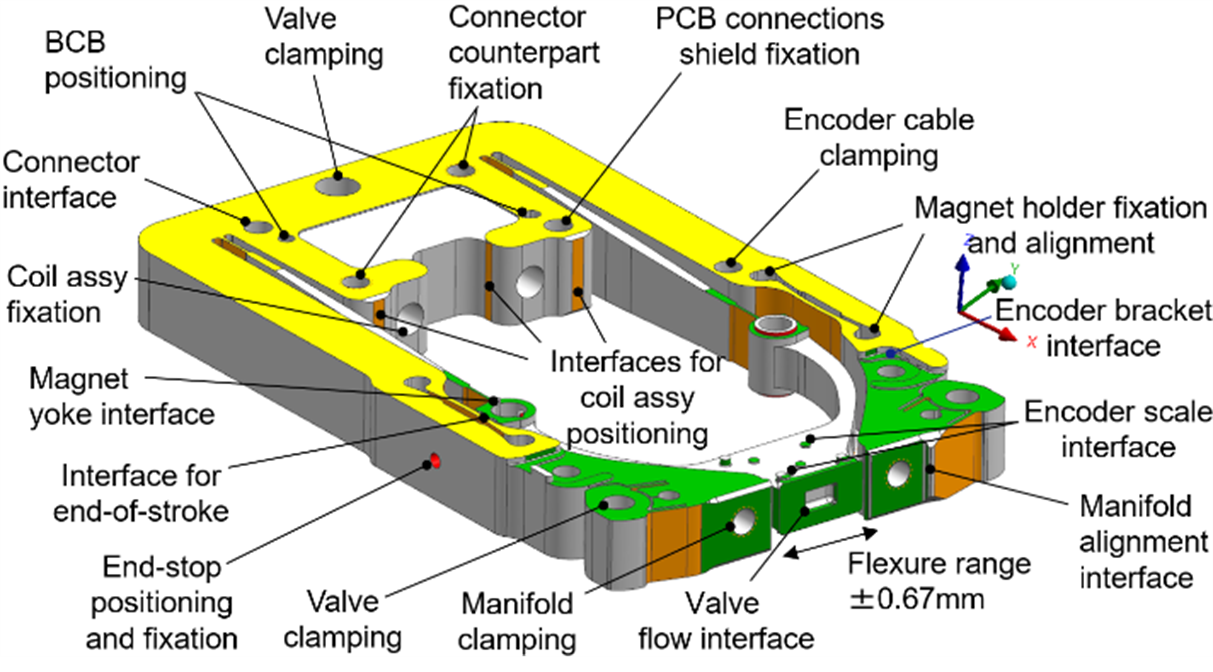 | 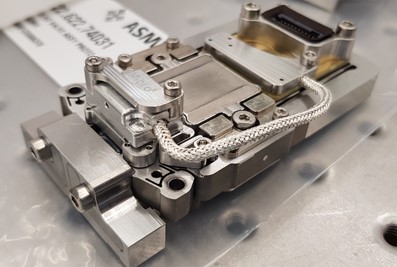 |
| Figure 5. Valve monolithic structure with interfaces. | Figure 6. Hardware realization of the hydrogen valve |
| Application: Semiconductor wafer stage | Realized: Fast and reliable hydrogen valve for wafer temperature conditioning and wafer throughput enhancement | Principle: Flexure-based mechanism with minimum stroke for fast and accurate contactless seal, closed box design, Abbe measurement, monolithic design for manufacturability, current setpoint optimization for reduced impact forces |
References
[1] Donose, R., et al., A hydrogen valve enabling overlay and throughput for EUV, Proc. of the 22nd euspen International Conference and Exhibition, Geneva, Switzerland, June, 2022
Development
Radu Donose, ASML Development and Engineering (2020)
